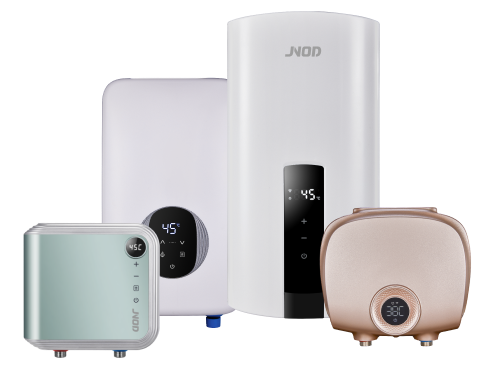The sparkling water market around the world witnessed noteworthy growth, and is expected to increase at a CAGR (compound annual growth rate) of 7.3% from 2020 to 2027. This can be linked to the rise in health consciousness among consumers and their preference for healthier options over sugary drinks. People are learning how to make carbonated water at home, as they strive for this benefit.
The Benefits of Making Your Own Sparkling Water
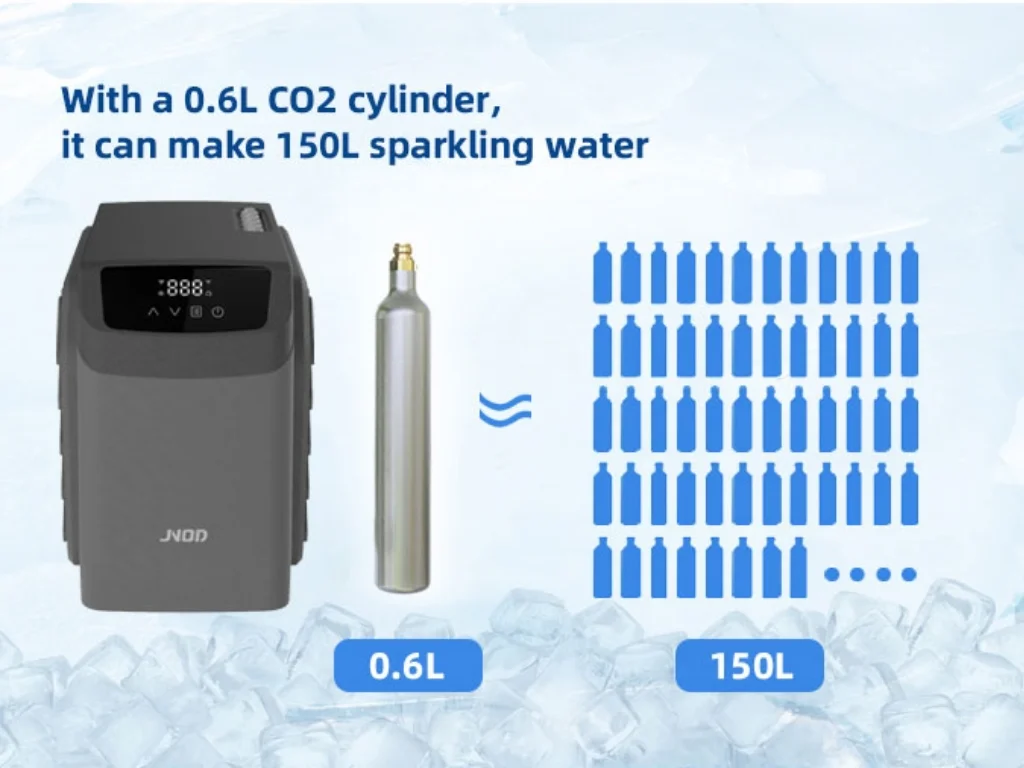
Cost-effective
Making your own seltzer at home is a great way of having all your favorite fizzy drinks without leaving a hole in your pocket. In fact, store-bought carbonated waters cost anywhere between fifty cents and two dollars per liter which adds up pretty quickly if you drink it regularly. However, when you make it yourself, you save considerable amount of money over time. A CO2 tank that holds 0.6 liters costs about $30 and could carbonate as many as 150 liters of water (about 40 gallons of water), thus bringing your costs down below 20 cents per liter.
Eco-friendly
Similarly, making your own sparkling water at home is environmentally friendly too. By reducing reliance on single-use plastic bottles, the environmental impact associated with your consumption habits can be minimized. Moreover, compared to purchasing disposable carbonation cartridges; using reusable CO2 tank or carbonation system further reduces waste.
Customizable
You can fully control the constituents so that there are no superfluous additives or preservatives in it. When you brew it yourself at home though, you have complete power over the level of carbonation and added flavors hence enabling you come up with something that suits exactly what you like taste wise. With fruit essences such as lemon lime being featured by seltzer waters sold by different soft drink companies for instance one can try out with numerous flavors including this and other different herbs or even sweeteners to arrive at an assortment of sparkling waters which are not only unique but also heavenly tasting.
Convenient
Being able to make seltzer water at home means that you will always have a cold drink in the fridge. You no longer have to worry about running out of your preferred brand or making impromptu trips to the store. Furthermore, there is a range of compact carbonation systems that are easy to utilize and these ensure that you do not occupy too much space on your kitchen counter tops while enjoying cool freshly made soda.
How to Make Carbonated Water at Home
There are five common methods for making carbonated water at home: soda siphons, carbonation drops, yeast carbonation, dry ice carbonation, and sparkling water dispensers. Before diving into the specific steps for each method, let’s take a look at their respective pros and cons.
| Method | Pros | Cons |
| Soda Siphons | 1. Compact and easy to use 2. Rapid carbonation | 1. Requires ongoing purchase of CO2 cartridges 2. Each cartridge carbonates only about 1 liter of water |
| Carbonation Drops | 1. Convenient and portable 2. No special equipment needed | 1. Less strong carbonation compared to other methods 2. Possible slight taste from citric acid and baking soda |
| Yeast Carbonation | 1. Cost-effective and natural 2. No special equipment needed | 1. Takes more time and patience 2. Requires careful monitoring to avoid over-carbonation and potential bottle explosions |
| Dry Ice Carbonation | 1. Very quick process 2. Good for large quantities quickly | 1. Handling dry ice requires caution to prevent burns 2. Container must not be sealed airtight to prevent explosion risks |
| Sparkling Water Dispensers | 1. Convenient and adjustable carbonation levels 2. Cost-effective and eco-friendly in the long run | 1. High initial investment for the machine and CO2 tank |
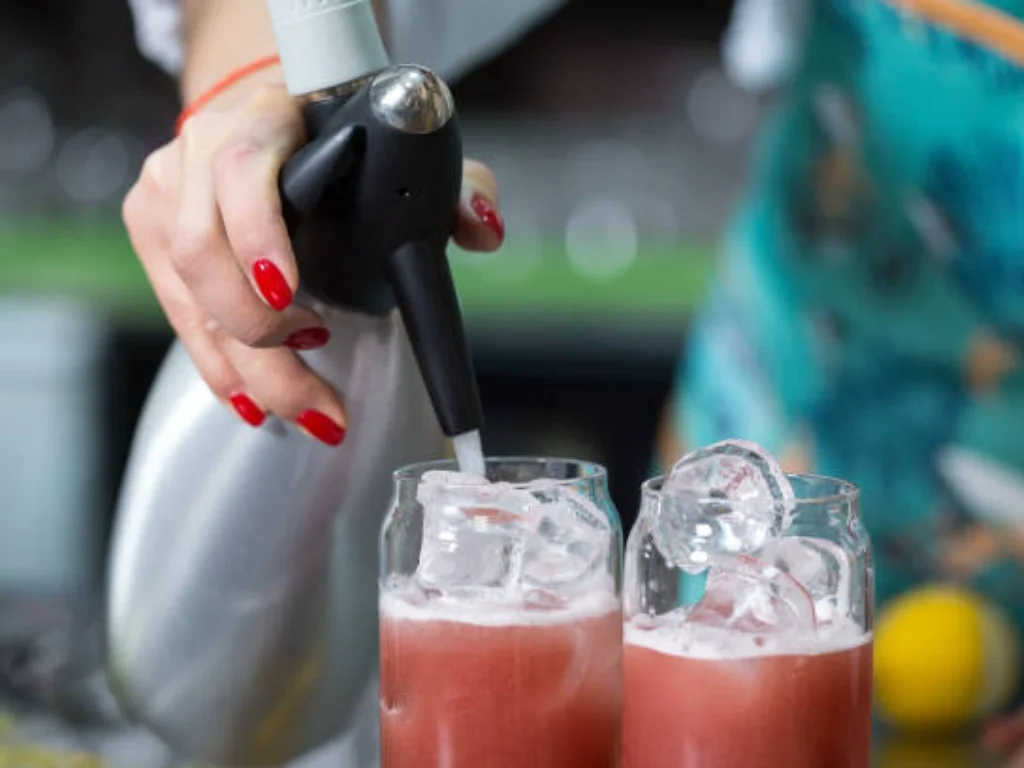
Soda Siphons
Soda siphons, also known as soda makers or seltzer bottles, are a classic way to make seltzer water at home. These devices use a CO2 cartridge to carbonate water, which is then dispensed through a nozzle. To use a soda siphon, fill the bottle with cold water and screw on the top; after that insert a CO2 cartridge. Shake gently to help the processes of fizzing, press the trigger to release carbonated liquid into your glass.
Compact and easy-to-use soda siphons are loved by many people for home-based carbonation. However, they require buying CO2 cartridges which adds up to the cost of making sparkling water.
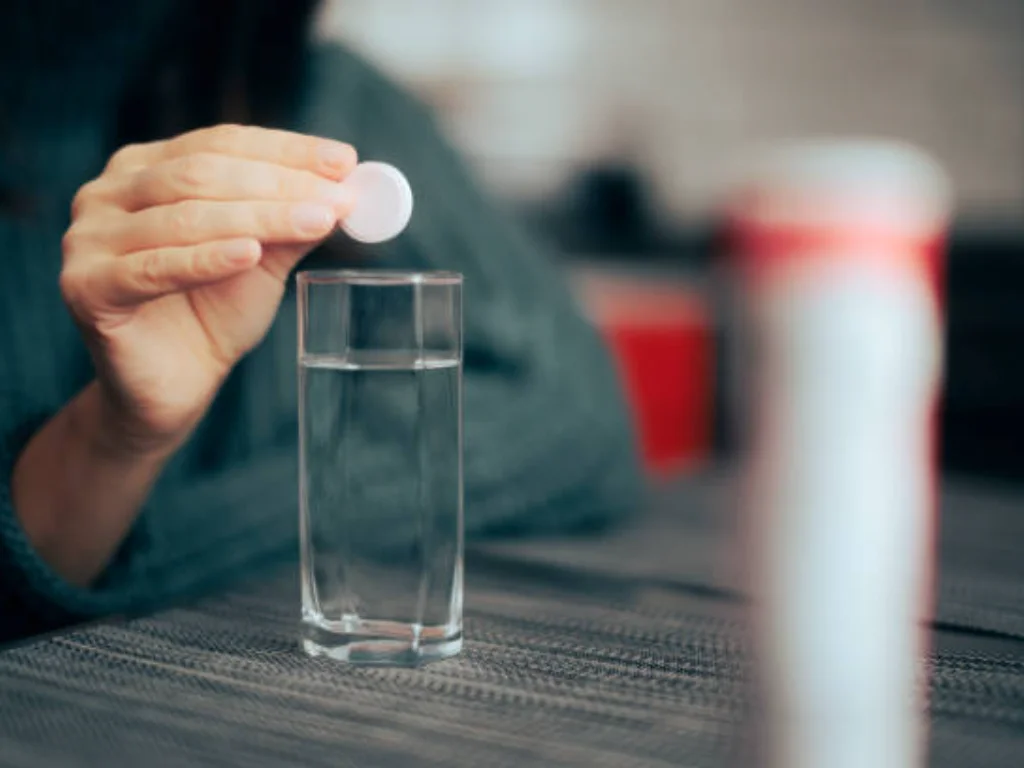
Carbonation Drops
Carbonation drops are a convenient and portable way to make sparkling water on the go. These small, effervescent tablets contain food-grade citric acid and sodium bicarbonate (baking soda), which react when dropped into water to create carbonation. To use carbonation drops, simply fill a soda bottle or glass with cold water and add the recommended number of drops. Wait for the tablets to dissolve completely, then enjoy your freshly carbonated water.
While carbonation drops are easy to use and don’t require any special equipment, they may not provide the same level of carbonation as other methods. Additionally, some people may find the taste of citric acid and sodium bicarbonate to be slightly noticeable in the carbonated water.
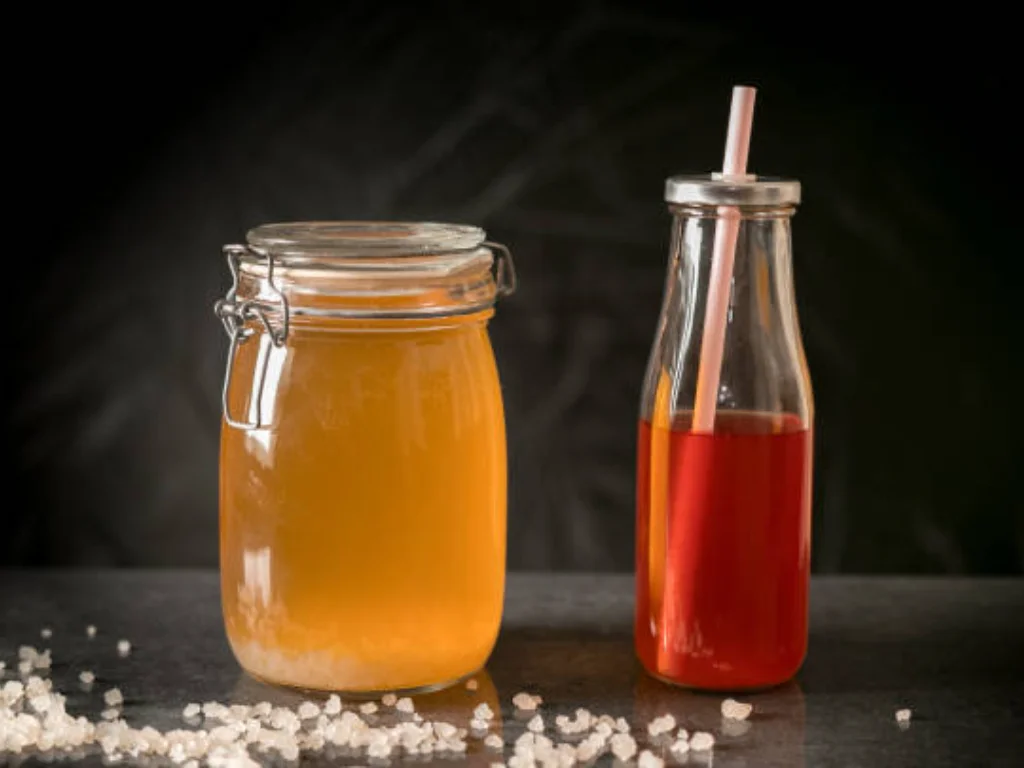
Yeast Carbonation
Yeast carbonation is a natural method for creating sparkling water that relies on the fermentation process. To carbonate water using yeast, mix a small amount of sugar and active dry yeast into a bottle of water. Seal the bottle tightly and store it at room temperature for 24-48 hours, allowing the yeast to consume the sugar and produce carbon dioxide. Once the desired level of carbonation is reached, refrigerate the bottle to stop the fermentation process and enjoy your naturally carbonated water.
While yeast carbonation is a cost-effective and natural method, it does require more time and patience compared to other carbonation techniques. It’s also important to monitor the fermentation process closely to avoid over-carbonation, which can lead to exploding bottles or an overly yeasty taste in the water.
Dry Ice Carbonation
Dry ice is a solid form of CO2 that can be used to quickly carbonate water at home. You just place a small amount of dry ice (about 1-2 ounces per liter of water) into a large, sealable container. Then, pour cold water over the dry ice and quickly seal the container. The CO2 from the dry ice dissolves into the water, carbonating it. Just be careful, as handling dry ice requires caution to avoid burns. It’s also important to ensure that the container used for carbonation is not airtight, as the rapid buildup of CO2 can cause the container to explode. Once the dry ice has completely sublimated, your fizzy water is ready to enjoy.
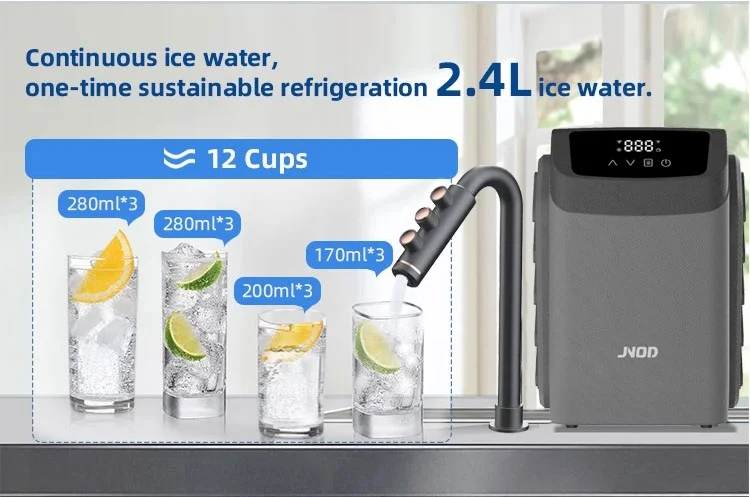
Sparkling Water Dispensers
These machines are a real convenience and efficiency for home use. They work with refillable CO2 canister that carbonates water upon your desire, so you can control the level of fizziness in your water and pour it as sparkling water right into your glass. It is an investment worth considering if you are a big fan of sparkling water.
Attach the CO2 tank to the machine and fill the water reservoir with cold water. Choose how much carbonation you want, then press the button to carbonate and dispense the water. Many models also offer the ability to add flavors to your sparkling water using specially designed syrups or by infusing the water with fresh fruit or herbs.
While sparkling water dispensers offer convenience and customization, they do require an initial investment for the machine and CO2 tank. The prices of these appliances vary between $50 – $200 depending on the water dispenser brand name as well as associated features. However, when used regularly this could be a great move given that it results in huge savings accompanied by environmental preservation since it employs reusable CO2 tank.
Jnod Provides the Best Sparkling Water Chillers
Jnod, a leading under sink water dispenser manufacturer, offers top-of-the-line sparkling water chillers designed to elevate your carbonated water experience. Their chillers utilize advanced R290 refrigerant technology, which not only provides efficient cooling but also operates at an industry-leading noise level of less than 45dB. This means you can enjoy perfectly chilled sparkling water without the distraction of loud machinery.
In addition to their quiet operation, Jnod’s sparkling water chillers offer a range of customizable features to suit your specific needs. These include basic chilling, filtration, carbonation, and even hot water functionality. If all you need is just something simple to keep your soda cold or something sophisticated capable of handling all sorts of beverages within your household, Jnod has a chiller that can do it well. The only right choice for any home conscious of the refreshing taste and health benefits of sparkling water.
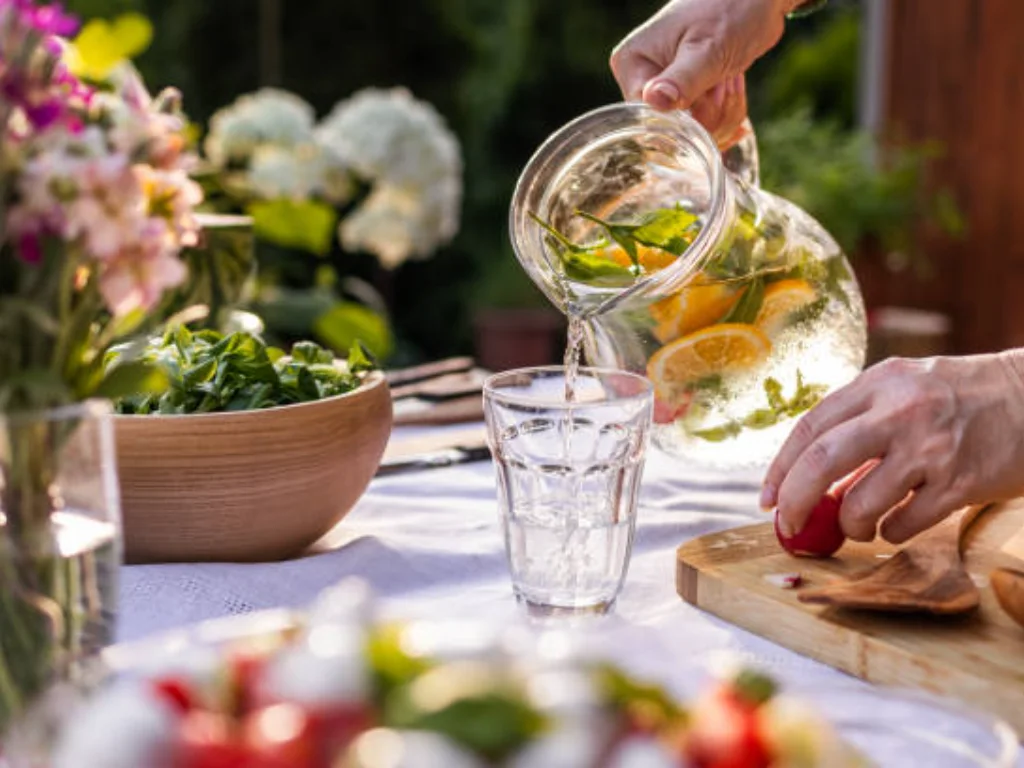
Sparkling Water Recipes to Try at Home
Once you’ve mastered the art of making sparkling water at home, it’s time to explore the endless possibilities of flavored carbonated beverages. Here are a few simple and delicious recipes to try:
- Lemon-Lime Spritzer: Add the juice of half a lemon and half a lime to a glass of sparkling water. Sweeten with a touch of honey or agave syrup if desired.
- Strawberry-Basil Fizz: Muddle 2-3 fresh strawberries and a few basil leaves in the bottom of a glass. Top with sparkling water and stir gently.
- Ginger-Peach Sparkler: Combine 1 oz of peach nectar or puree with a splash of ginger syrup in a glass. Fill with sparkling water and garnish with a slice of fresh peach.
- Cucumber-Mint Refresher: Muddle 3-4 slices of cucumber and a few mint leaves in a glass. Add sparkling water and a squeeze of lime juice for a light, refreshing beverage.
- Pomegranate-Rosemary Spritz: Add 1 oz of pomegranate juice to a glass and top with sparkling water. Garnish with a sprig of fresh rosemary for an aromatic twist.
Don’t be afraid to experiment with your favorite fruits, herbs, flavors to make your own special flavor cocktail made from carbonated ice-water. When you create your own flavored seltzer at home, you have access to healthier alternatives than sugared pop sodas and commercial drinks.
Troubleshooting Common Issues You May Concerned
Over-carbonation
This happens when too much CO2 has been dissolved into the water making it very fizzy or sometimes even slightly bitter tasting due to excessive carbonation period or too much dry ice/CO2 usage. To avoid over-carbonation follow the manufacturers’ instruction on carbonating method using shorter periods or small amounts of CO2 until you get just enough fizz that suits your taste buds.
Under-carbonation
On the other hand, under carbonation is when the amount of carbonation CO2 dissolved into water is not enough, making it flat or somewhat fizzy. This may be due to insufficient CO2, carbonating for a short time or using warm water. Better carbonation can be achieved by using cold water (38-50°F or 3-10°C), slightly increasing the duration of carbonation or adding some more CO2.
Leaks and Spills
While using soda siphons or sparkling water makers, spills and leaks can happen if the bottle is too full or if the equipment wasn’t sealed properly. To avoid such leaks make sure that all connections are tightened properly and do not fill beyond recommended level your bottle/carbonization chamber. In case of spills, clean up immediately so as not to damage your surface areas or equipment.
If you still experience any persistent issues with your sparkling water maker, consult their troubleshooting guide provided by manufacturer’s instructions for further assistance.
Conclusion
Making your own sparkling water at home instead of buying soda water from stores is a viable option. It is cheap, environmentally friendly and one can tailor it in line with his/her own preferences in order to enjoy either its refreshing taste or possible health benefits as well. You can easily design many diverse yummy healthy drinks that will suit exactly your taste preference by simply experimenting with different methods of carbonation and flavors combinations.
The most important thing is to find the right one, the method that suits your lifestyle and budget. And with Jnod’s sparkling water chillers of top quality, you can make your carbonated experience more thrilling with fresh sparkling water that is perfectly chilled every time you want it.
This means that you should start making homemade sparkling water drinks at home and open a door for countless ideas on how to make them healthy and tasty in your own kitchen.
FAQ
Sparkling water offers several potential health benefits, including:
1. Hydration: Sparkling water can help keep you hydrated, which is essential for overall health and well-being.
2. Digestive health: The carbonation in sparkling water may help improve digestion and relieve constipation by stimulating the digestive system.
3. Weight management: Sparkling water is a great alternative with no calories to sugary drinks, which can help support weight management goals when used as a replacement for high-calorie beverages.
4. Improved mineral intake: Some sparkling mineral waters contain naturally occurring minerals like calcium, magnesium, and potassium, which can contribute to a healthy diet.
Yes, making sparkling water at home is generally safe as long as you follow the proper methods and use food-grade equipment. When using dry ice or yeast carbonation, it's important to take precautions to avoid injury or contamination. Always follow the manufacturer's instructions for your carbonation equipment and ensure that your water source is clean and safe to drink.
Yes, you can use tap water to make sparkling water provided that the water from your area is safe for drinking. But if you have some concerns about the taste or quality of the tap water, you can use filtered water or plain water instead. It is also important to use cold water with a temperature range of 38-50°F or 3-10°C to enhance the carbonation process and make the sparkling water taste better.
The shelf life of homemade sparkling water varies with the method of carbonation and how well the water is sealed and stored. In general, sparkling water prepared with a soda siphon or sparkling water dispenser can be stored in a sealed container in the fridge for up to one week. Carbonation drops or yeast carbonation sparkling water should be consumed within 1-2 days to enjoy the best quality and taste.
To clean and maintain your sparkling water equipment:
1. Clean the bottle or the carbonation chamber with warm soapy water on a frequent basis.
2. Do not use harsh detergents or scrubbers as they may harm the equipment.
3. For sparkling water dispensers, clean and descale the machine according to the manufacturer’s instructions to prevent mineral buildup.
4. Make sure that all the parts are completely dry before reassembling your equipment to avoid the growth of mold or bacteria.
5. When not in use, keep your equipment in a clean and dry area.
If you take proper care of your sparkling water equipment, it will give you quality carbonated water for a long time.
